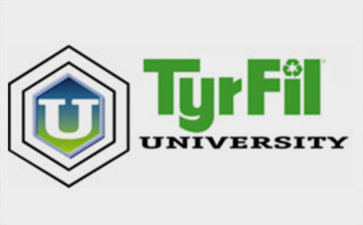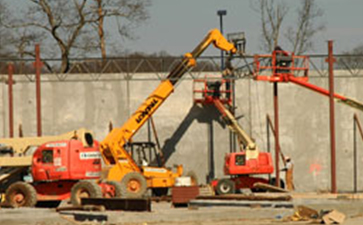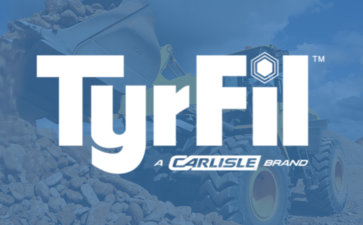Flashback: The First Decade
In the seventies, many changes were taking place within the tire industry. Michelin had introduced the radial tire into the market causing the American manufacturers to “scramble” for an answer. Most American tires were still bias ply carcasses and tube type. Earlier attempts at tubeless radial tire manufacturing were unsatisfactory and there were many stories of failure during this time pertaining to glass belts, fiberglass cords, ply construction involving wire, nylon and rubber, etc.
Also, in the seventies, the United States Government was now heavily involved in development of the Interstate Highway System. Highways were being built in every state. In addition to the building of highways, shopping malls, housing developments, and construction sites were everywhere. Sales of Off-the-Road (OTR) tires were “booming”, so much so, tire manufacturers were unable to meet the demand for tires.
Changes were also taking place in the Mining Industry. Large corporations had purchased the small mines and were now producing minerals in large quantities through strip mining and mechanized underground machinery. The “pick and shovel” miners in Appalachia, during the first half of the century, were now using modern equipment on rubber tires.
By 1974, early TyrFil adopter, Brad Ragan, Inc (BRI), had grown exponentially during this time through acquisition of other tire companies and through new tire and retread sales to construction companies that were working on the Interstate Highway System. In 1975, Mr. Ragan was introduced to flatproofing by Russ Chandler, Vice President of Mitchell Tire Company (MITCO). Mr. Chandler sought employment at BRI. He wanted to open a location in Chattanooga, TN to market a new revolutionary product, polyurethane flatproofing.
Prior to 1975, BRI had made and sold a “foam” manufactured in the Radford, VA facility. The foam, a DuPont formulation, grew inside the tire when the formulation was placed in a heat chamber. The PSI within the foam filled tire was not consistent. The foam also would develop flat spots within the carcass when placed under load. The material failed miserably when a sidewall cut occurred, causing the foam to erupt though the tire injury like a “mushroom”. There was also a very serious accident in the Radford Plant in 1972, when the material exploded and seriously burned an employee. So, there was a negative connotation around flatproofing products at that time.
But there were several distinct differences with the polyurethane flatproofing technology. First, the entire cavity of the tire was filled with the two-part polyurethane liquids. In a few hours, it would cure into a solid elastomer that would flex similar to a pneumatic tire. Also, the polyurethane tire would never go flat and would maintain a consistent PSI. Despite these differences, Sam Capps, a pioneer in the flatproofing industry, was initially hesitant to try out this new product.
Capps had been observing that the pneumatic tires experienced many flats in the severe and hostile construction and mining environments. The flats resulted in costly downtime and service costs to the end user. Flatproofing could easily fit into the changing and growing OTR tire market. The earthmoving equipment was rapidly changing from track and metal wheels to air-filled tires. And he believed that urethane flatproofing would definitely lead to new tire and service sales for BRI. So, he advised Mr. Ragan to hire Mr. Chandler, open up a location in Chattanooga, and begin purchasing, processing, and selling urethane flatproofing fill. Mr. Ragan’s response, “Sammy, I am glad that you and I agree, cause I was going to do it anyway.”
Rosy Future
Just four years in and TyrFil started to get major attention. The following is an excerpt from Modern Tire Dealer magazine, August 1975:
“The market for urethane filling is extensive now and should expand greatly in the future. All truck tire equipped vehicles in rough operating conditions – mining, quarries, landfills, rock and shale – are subject to expensive tire penetration failures. These failures are expensive in terms of tire repair or replacement as well as lost use of the vehicle and its operator. In addition to preventing downtime loss is the advantage of reduced investment in spare tires. A fast-growing market for tire filling is that for industrial tires. As mills and factories continue to automate, uninterrupted service of their materials handling equipment is a must.
In our opinion, urethane tire filling is a “natural” for retreaders who already have a built-in following of customers who experience operating conditions where penetration, tire replacement and repair, and downtime are a problem. This process seems destined to replace foam filling, and because of its superior, more reliable performance, the market potential for the service should increase yearly. And it doesn’t add up for a tire buyer to buy his new tires from one dealer, have them retreaded or relogged by another, and urethane filled by a third! One major tire company has already established a sales department devoted exclusively to urethane equipment and material sales to their dealers and retreaders. Obviously, this company appreciates the income that this service provides for its dealers and retreaders as well as its impact in securing new tire customers!
Selling urethane tire fill and retreading go together like ham and eggs. First the tire fill prevents under-inflation and run-flat caused damage. It assures a much greater percentage of retreadability, but more importantly, spreads the cost of tire fill over more than one tread life. And for the retreader, more income and profit retreading the filled tire.”
In the beginning, we concentrated on material handling or industrial tire companies. But we began finding more applications for the flatproofing material than forklifts with the more heat-resistant, softer and stronger RePneu, now TyrFil Ultra. In the late 1970s, polyurethane tire fill still had its sights on the larger tires now on the construction and earthmoving equipment but had found a lot of success in the smaller tires, for example, baggage cart tires.
In 1976, one of the first of many large tires to be filled was at Midway Coal in Midway, PA. The 67×51, 54 Ply Goodyear Tires were flatproofed. Each tire held almost 20,000 pounds of RePneu. The tires were filled onsite due to the weight. In 1977, an American copper mine had recently begun flatproofing its equipment with a low-pressure urethane fill. The first unit was a Wabco Haulpack 85C capable of carrying 85 tons per load. Each 24×49 tire requires 2,900 pounds of flatproofing. Spilled ore on the road bed causes frequent and often irreparable damage to air-inflated tires. Urethane flatproofing not only eliminates severe tire damage as can occur during blowouts, but also simplifies relogging on giant tires.
Present Day
From these earlier years, TyrFil has grown to be the leading global supplier of polyurethane tire fill and productivity technologies for Off-the-Road (OTR) equipment tires and is utilized in over 65 countries. Our facilities in California, Tennessee, Ohio, Germany and China have processed over 1 billion pounds since 1971. Carlisle TyrFil stands alone in the industry as the one global tire fill provider that seamlessly integrates international manufacturing, technical service, and sales support capabilities all under a single supply chain management umbrella.


